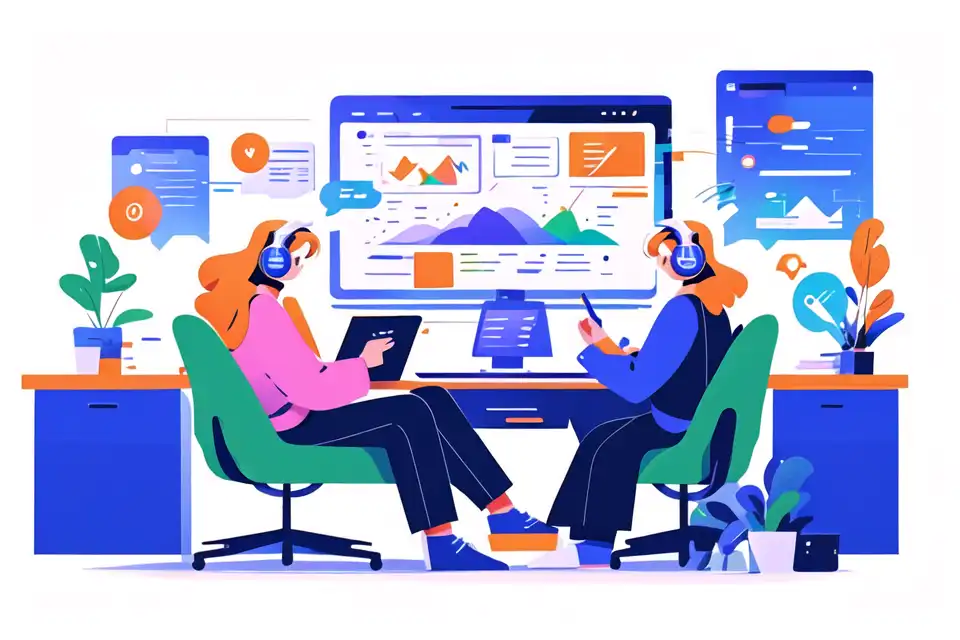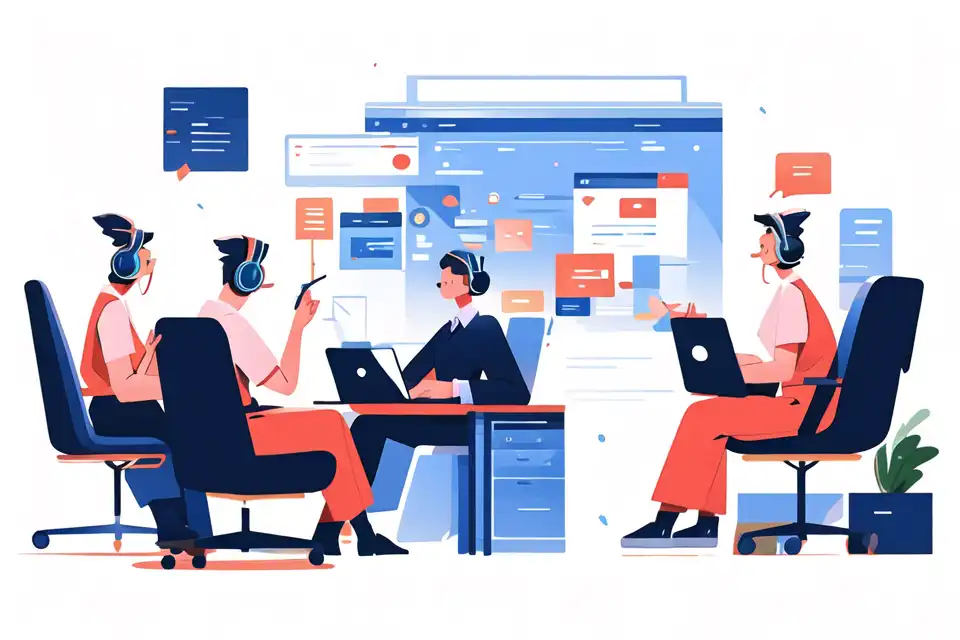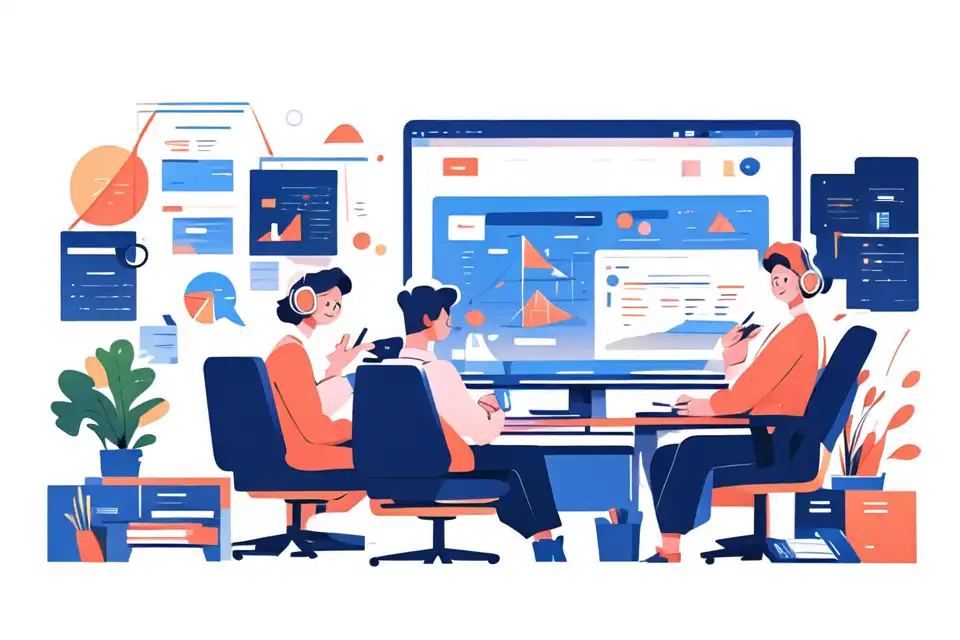Educational Content Management
Learn about the top tips and strategies in educational content management
Try Lark for Free
In today's rapidly evolving digital age, the education sector has been compelled to adapt and transform to meet the demands of the 21st-century learner. One significant advancement in this regard is the concept of Educational Content Management (ECM). ECM is not just a buzzword, but a revolution in the way educational content is created, stored, managed, and delivered. It has the potential to enhance learning experiences and outcomes, making it a worthy investment for every educational institution. According to a report by Valuates Reports, the global ECM market was valued at $5.66 billion in 2020 and is projected to reach $12.94 billion by 2026, growing at a CAGR of 14.3% from 2021 to 2026. These figures underscore the increasing importance of ECM in the modern educational landscape.
Unlock the power of Lark to elevate your business operations. Discover actionable strategies and best practices in our comprehensive guide.
The essentials of educational content management
Defining Educational Content Management
Essentially, ECM is a strategic approach that integrates the use of software or systems to create, store, manage, and deliver educational content. This content includes lesson plans, worksheets, video tutorials, quizzes, and more. The beauty of ECM is its ability to streamline and simplify content management, making educational resources more accessible to both educators and students.
The Role of Educational Content Management in Modern Learning
ECM is becoming an indispensable part of modern learning ecosystems, especially with the rise of remote learning. It goes beyond the traditional learning management systems (LMS) by providing educational institutions with the means to cohesively manage their content, ensuring consistency, quality, and accessibility. It also empowers educators to customize and personalize learning materials, catering to diverse learning styles and needs.
The impact of educational content management on teaching and learning
Enhancing Pedagogical Approaches
ECM can revolutionize teaching methodologies. For instance, it allows educators to easily update and adapt learning materials to align with evolving curriculums, keeping instruction relevant and engaging. Consequently, it fosters a more dynamic and flexible teaching environment.
Boosting Student Engagement and Outcomes
By streamlining content delivery and making resources readily available, ECM can significantly boost student engagement. It supports personalized and self-paced learning, enabling students to access materials that match their learning styles and progress at their own pace, resulting in improved academic outcomes.
Related:
Education Solution | LarkLearn more about Lark can help you with everything mentioned so far in the article.
Integrating educational content management: a step-by-step guide
To effectively integrate ECM into your curriculum or classroom, you need to follow a systematic approach. Start by defining your goals and identifying your content needs. Evaluate different ECM platforms, considering factors like user-friendliness, customization options, and support services. Once you've selected a suitable ECM platform, train your staff to use it effectively. Continually monitor and adjust your ECM strategy to ensure it meets your educational objectives.
Real-world success stories: educational content management in action
Case Study 1: Transforming Learning through Educational Content Management
A school in California was struggling with content management, leading to disorganized teaching materials and inconsistent learning experiences. By implementing an ECM system, they were able to consolidate their content, streamline content creation and delivery, and greatly enhance teaching and learning.
Case Study 2: Advancing Education with Content Management Strategies
An online university, faced with the challenge of managing a vast array of digital learning materials, turned to ECM. It significantly improved content organization, accessibility, and customization, leading to enhanced student engagement and improved academic performance.
Learn more about Lark can help you with everything mentioned so far in the article.
Potential challenges and proactive solutions
Like any other technological implementation, ECM adoption can pose certain challenges, such as resistance from staff, technical issues, and concerns about data security. However, with proactive strategies like comprehensive staff training, reliable support services, and robust data security measures, these challenges can be effectively overcome.
Future directions: the evolution of educational content management
Emerging Trends in Educational Content Management
Current trends in ECM include the integration of Artificial Intelligence (AI) to automate content creation and management, and the use of analytics to track and improve content effectiveness.
Predictions on the Future of Education and Content Management
As technology continues to evolve, ECM is poised to become even more dynamic and vital in shaping modern education. It's predicted that ECM will play a central role in creating personalized, engaging, and effective learning experiences.
Related:
Education Solution | LarkLearn more about Lark can help you with everything mentioned so far in the article.
Conclusion: embracing the power of educational content management
The importance of ECM in today's educational landscape cannot be overstated. By effectively managing educational content, ECM empowers educators to deliver dynamic, relevant, and engaging instruction, thereby boosting student engagement and academic outcomes.
Do's and don'ts of educational content management
| Do's | Don'ts |
|---|---|
| Do invest in training for educators | Don't rush the implementation process |
| Do prioritize security and privacy | Don't overlook the need for ongoing support |
| Do involve all stakeholders in the process | Don't neglect to evaluate and adjust |
Learn more about Lark can help you with everything mentioned so far in the article.
Unlock the power of Lark to elevate your business operations. Discover actionable strategies and best practices in our comprehensive guide.








